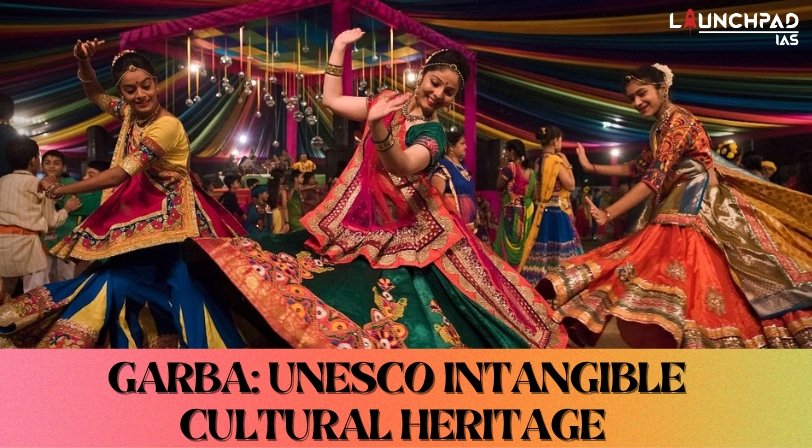Recent Context:
Garba Dance of Gujrat made it to the UNESCO Intangible Cultural Heritage list.
What is Garba?
- It is a folk dance of Gujrat state which is performed during the 9-day Navratri festival. The dance is a celebration of good over evil. The word Garba comes from the Sanskrit word womb implying life and creation.
- Garba is performed by both men and women around a centrally lit lamp or a picture or statue of Goddess Shakti.
- Modern-day Garba is influenced by Dandiya Raas, a traditional dance performed by men. The merger of these two dances has formed present-day garba.
UNESCO Intangible Cultural Heritage (ICH)
- UNESCO is a term that refers to the practices, representations, expressions, knowledge, skills, and cultural spaces that are recognized as part of the cultural heritage of a community group or individual.
- In 2003, UNESCO adopted the Convention for the Safeguarding of the Intangible Cultural Heritage (ICH), signifying a commitment to protect, promote, and transmit the diverse expressions of human culture.
- The convention establishes two crucial lists for ICH.
- Representative List: Showcasing the global diversity of ICH, this list raises awareness of its significance and importance.
- Urgent Safeguarding List: Identifying threatened ICH, this list calls for immediate measures to ensure its survival.
- Examples of ICH:
- Languages, oral traditions, literature, and poetry.
- Performing arts, such as music, dance, and theatre.
- Social practices, rituals, and festive events.
- Knowledge and practices concerning nature and the universe.
- Traditional craftsmanship, such as pottery, weaving, and metalwork.
Also, check out: VAN DHAN SCHEME


